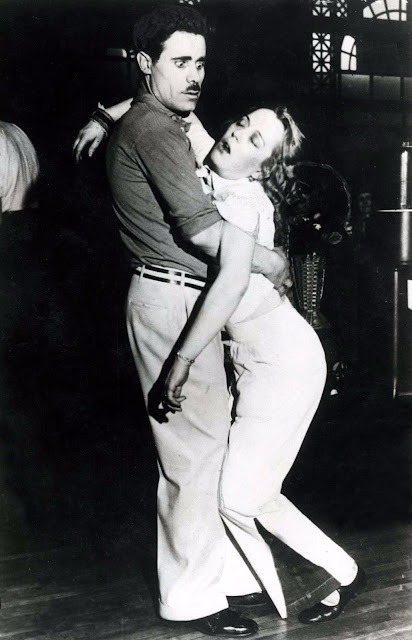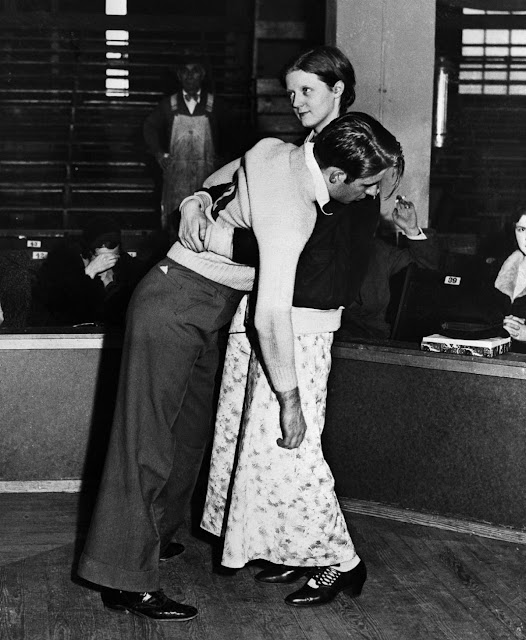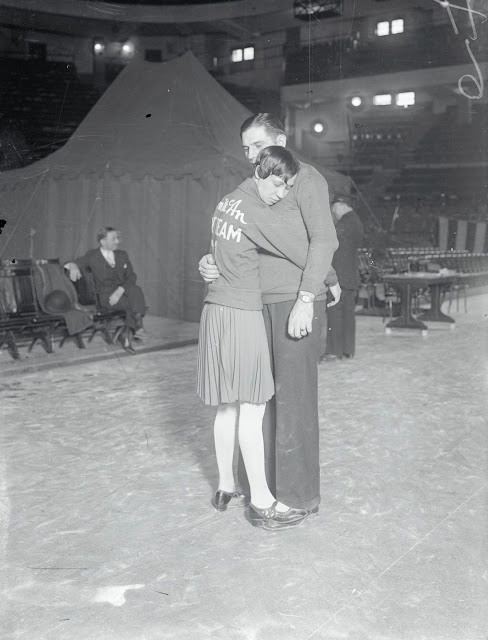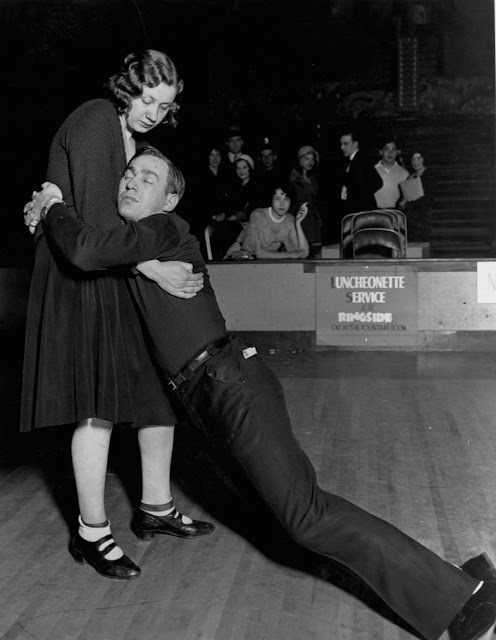Dance Marathons (also called Walkathons), an American phenomenon of the 1920s and 1930s, were human endurance contests in which couples danced almost non-stop for hundreds of hours (as long as a month or two), competing for prize money.
Dance marathons originated as part of an early-1920s, giddy, jazz-age fad for human endurance competitions such as flagpole sitting and six-day bicycle races. Dance marathons persisted throughout the 1930s as partially staged performance events, mirroring the marathon of desperation Americans endured during the Great Depression.
In these dance endurance contests, a mix of local hopefuls and seasoned professional marathoners danced, walked, shuffled, sprinted, and sometimes cracked under the pressure and exhaustion of round-the-clock motion. A 25-cent admission price entitled audience members to watch as long as they pleased.
"When bodies began to demand rest, dancers could often be seen plucking imaginary daisies from the linoleum floors or fleeing the building from hallucinated attackers, a manic state fans came to call “squirrely” behavior."
Dance marathons were held in Spokane, Seattle, Yakima, Wenatchee, Bellingham, and elsewhere. They occupied a slightly disrespectable niche in society, and many towns banned them, finding them disruptive, disturbing, and even repugnant.

Dance 'Til You Drop

Dance 'Til You Drop

Dance 'Til You Drop

Dance 'Til You Drop


Dance 'Til You Drop

Dance 'Til You Drop

Dance 'Til You Drop

Dance 'Til You Drop

Dance 'Til You Drop

Dance 'Til You Drop